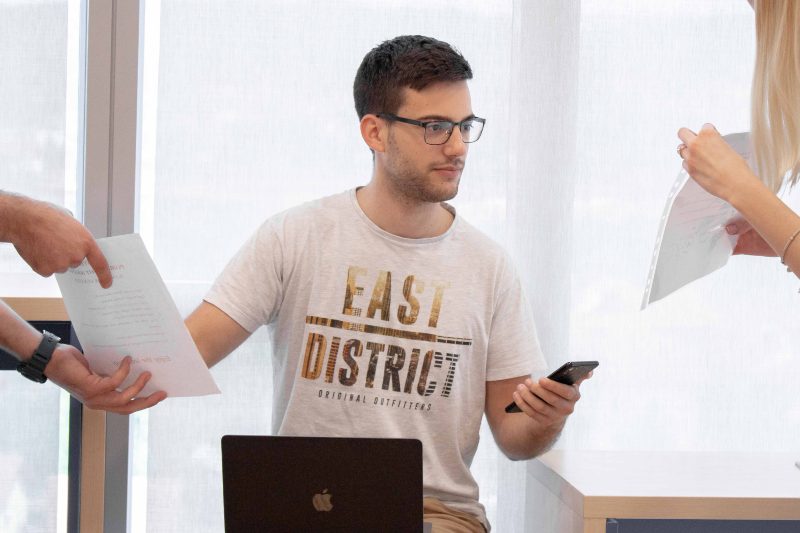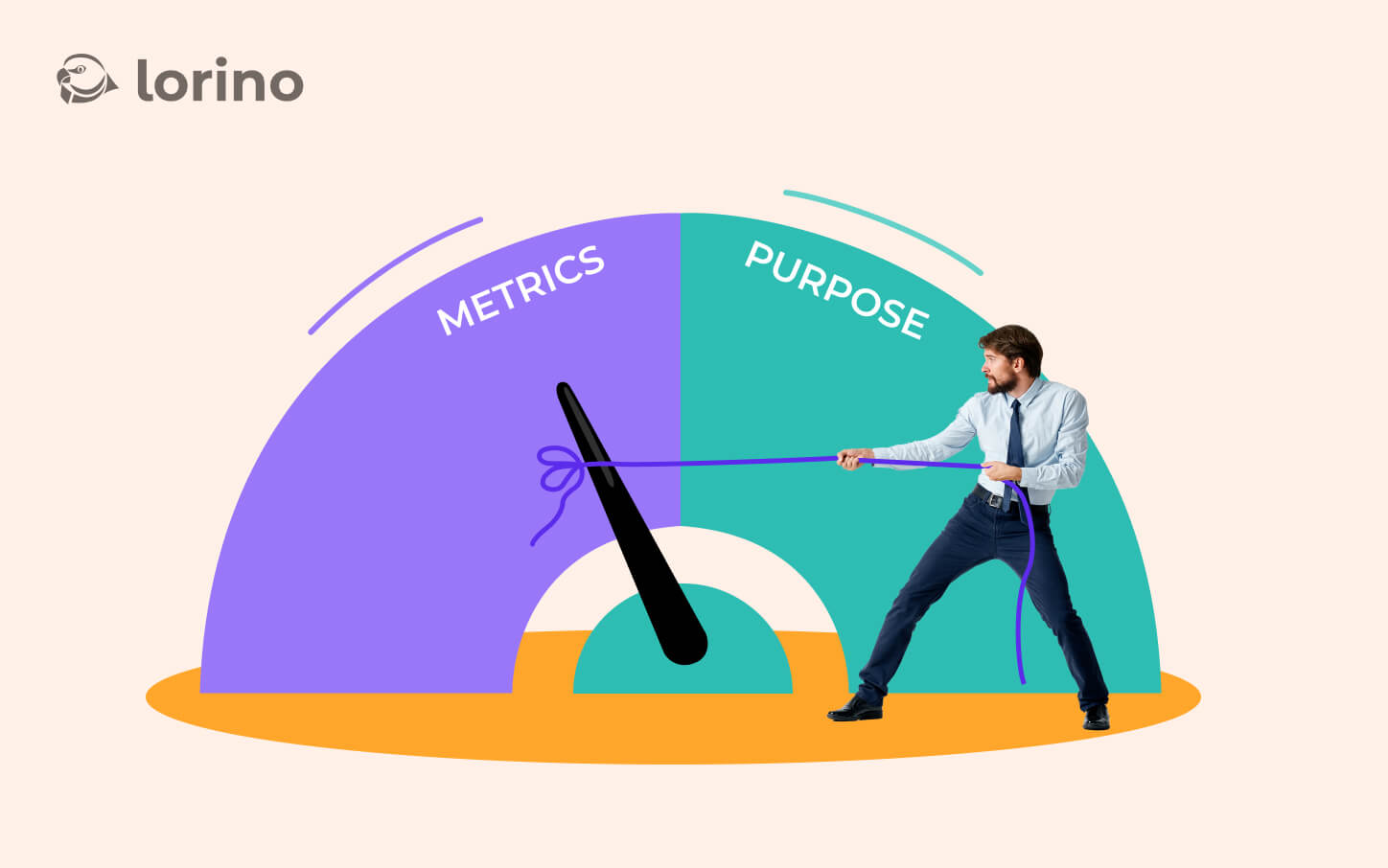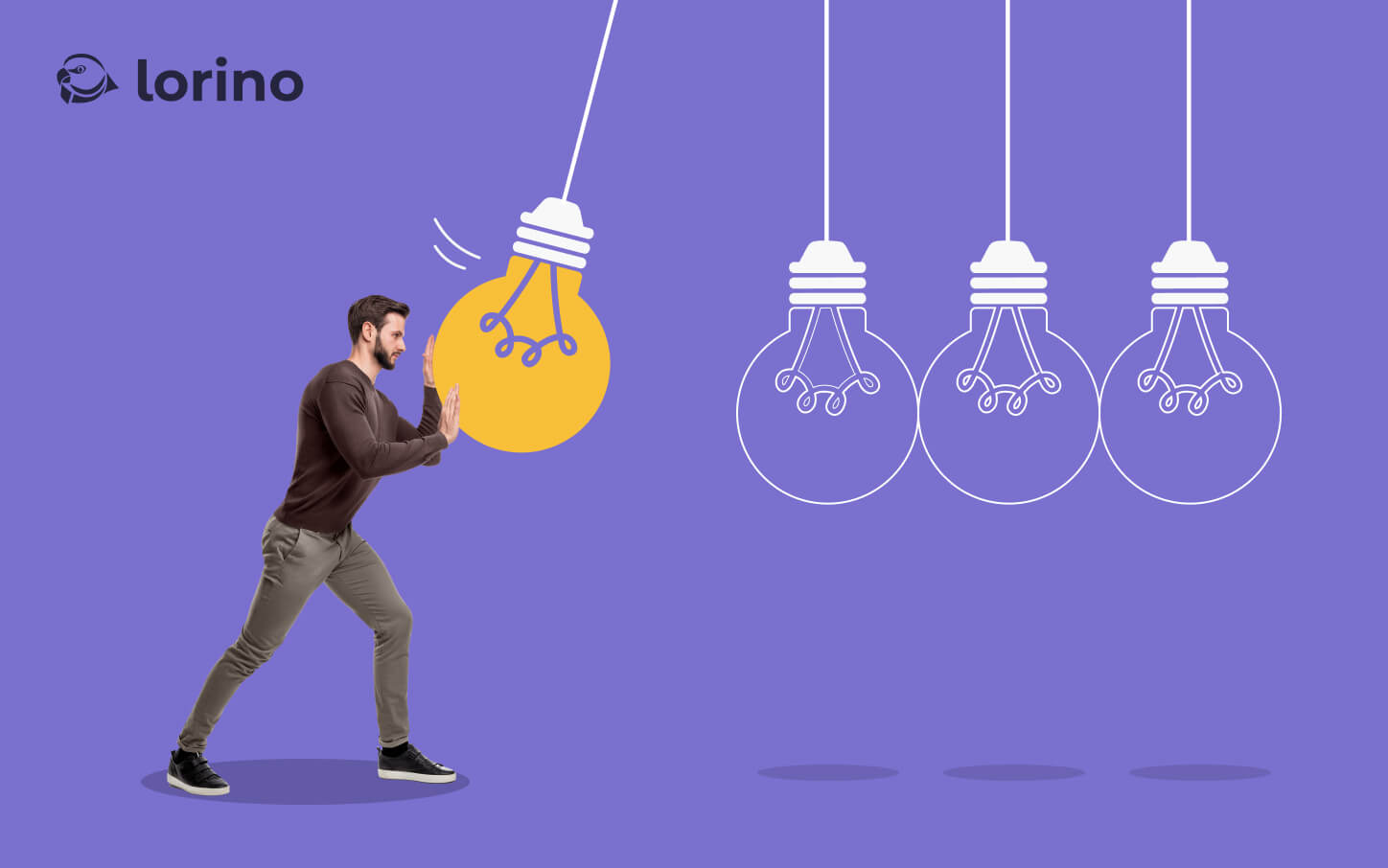The chances of you reading this until the end are slim at best. Think about it: when was the last time you focused on a single task, be it work-related or even just reading a book, for longer than half an hour before getting interrupted by a message, email, or notification?
And once you got distracted, how often do you come back to the task at hand and pick up where you left off? Do you even know where you left off?
Every time we get interrupted and have to switch our focus to something else, it takes us a while to get back into "the zone" or the state of flow where we're really productive.

It's been estimated that it can take up to 23 minutes to get fully back into the task at hand after an interruption. And if you're constantly context switching, you're never really able to get into that state of flow in the first place.
In this article, we'll talk about what context switching is, how it sabotages productivity, and what you can do about it.
So, What Is Context Switching?
Are you constantly feeling overwhelmed and stressed out, struggling to keep up with the never-ending flow of notifications and emails? If so, you're not alone. In today's digital world, it's all too easy to get distracted and lose focus and, as a result, our productivity suffers.
One of the main culprits behind this is context switching – that is, switching from one task to another without finishing the previous one. This can be caused by a slew of distractions, such as notifications or emails, but it can also be attributed to our own multitasking tendencies.
Multitasking is a Myth
Multitasking has become somewhat of a buzzword, with many people seeing it as the key to being productive. However, multiple studies have shown that multitasking is actually counterproductive.
In fact, a study by the University of London found that people who multitasked while performing cognitive tasks experienced an IQ drop of up to 15 points. That's the equivalent of missing an entire night's sleep!
The bottom line is that multitasking is a myth. Our brains can't actually focus on multiple tasks simultaneously; we're just rapidly switching our attention from one task to another.
And this can be extremely counterproductive, leading to lower productivity and decreased efficiency.
Which brings us back to context switching.
Context Switching and Multitasking
You might be wondering why we're talking about context switching and multitasking in the same breath, but the two are actually closely related.
Context switching is really an involuntary form of multitasking, as constantly having to jump in and out of meetings, switching between unrelated tasks, and handling messages or calls is making you juggle multiple tasks at the same time, whether you want to or not.
The detrimental effects on your productivity are the same, regardless of whether context switching is caused by external distractions or your own multitasking tendencies.
The Neuroscience Behind Context Switching
To understand why context switching is so detrimental to our productivity, we need to take a look at what's happening in our brains when we context switch.
When we context switch, our brains need to shift gears and adjust to the new task at hand. This is known as cognitive switching costs, and it refers to the mental effort required to switch from one task to another - it’s a bit complicated, but bear with us!
These costs can be divided into two main categories: internal and external. Internal switching costs are caused by the need to remember what you were doing before the interruption and how to pick up where you left off. External switching costs are incurred when you need to adjust to a new environment or set of circumstances.
For example, if you're working on a report and you get pulled into a meeting, the internal switching costs would be the mental effort required to remember what you were doing and how to pick up where you left off when the meeting is over.
The external switching costs would be the effort required to adjust to the new environment and pay attention to the meeting.
Both of these types of costs take a toll on our productivity, as they require us to use up valuable mental resources that could be better spent on the task at hand.
The Cost of Context Switching
Truth to be told, there isn't much research on the effects of context switching per se, but there are plenty of studies that look at multitasking in general and its impact on our cognitive abilities, and the findings are not pretty.
Apart from the ones listed above, these studies found that multitasking can lead to up to a 40% drop in productivity, it can take up to 50% longer to complete a task when you're multitasking, and it can decrease your accuracy by up to 50%.
In other words, context switching is costly, both in terms of time and accuracy. And it's not just our cognitive abilities that suffer; context switching can also take a toll on our emotions.
There was one study by the University of California, Irvine, which found that when people are constantly interrupted, they develop a mode of working faster (and writing less) to compensate for the time they know they will lose by being interrupted.
But that has its cost: people in the interrupted conditions experienced a higher workload, more stress, higher frustration, more time pressure, and felt they invested more effort.
So in conclusion: most research agrees that context switching can have a serious impact on our productivity, efficiency, and accuracy - and even the ones that didn't find context switching to be detrimental to our performance, still found that it can take a toll on our emotional well being.
So what can we do about it?
How to Mitigate the Effects of Context Switching
We are well aware of the fact that in this day and age, context switching is inevitable, and that we can't just eliminate all distractions and interruptions from our lives. However, there are certain things we can do to minimize the effects context switching has on our productivity and well-being.
Here are a few suggestions:
1. Turn off Notifications
We know, we know... You probably already feel guilty for even thinking about it, but let's be honest: when was the last time you received a message or email that really required your immediate attention?
Chances are, most of the time you receive notifications, it's about issues that can wait for at least an hour. So allow yourself that time to work on your task uninterrupted, and check your messages later. You can always set a specific time of the day to check your messages, so you're not completely ignoring them.
2. Schedule Office Hours
In order to successfully schedule your office hours, you'll need to communicate with your team and let them know when you're available and when you're not. This way, they'll know when they can approach you with questions or issues, and when they need to wait.
When it comes to meetings, consolidate them as much as possible, and make sure they start and end on time. This will give you some buffer time to transition from one task to another.
3. Prioritize, Prioritize, Prioritize
You can't do everything at once, and you certainly can't do everything well. So instead of trying to context switch between a million different tasks, focus on one task at a time and give it your undivided attention.
Make a list of the things you need to do, and then prioritize them. Work on the most important task first, and then move on to the rest of the tasks on your list.
If you need to context switch between tasks, make sure to give yourself a few minutes in between tasks to transition and refocus.
4. Take Breaks
We know, it sounds counterintuitive to take a break when you're trying to be productive, but it is backed by science.
You do not need to go as far as using the Pomodoro technique, but it might be helpful to take a five-minute break for every hour you work, just to give your brain a chance to rest.
And remember, this break is not meant for you to check your email or slack, but to actually take a quick walk, grab a coffee, or chat with a colleague.
5. Invest in Gear that Can Help
There are definitely products out there that can help you with context switching. For example, if you work in an open office and noise levels are constantly interrupting you, invest in a good pair of noise-canceling headphones.
There are also apps that can block certain websites or apps for a specific amount of time, so you're not tempted to context switch.
Some people also find it helpful to use a physical whiteboard to keep track of their tasks, so they can visually see what they need to do and how much progress they're making.
Whatever it is that you think might help you focus, invest in it and give it a try.
Summary
Even though we can't completely avoid context switching, there are certain things we can do to minimize its effects on our productivity and well-being.
Even just being aware of its negative effects can help us make small changes in our behavior that can have a big impact.
So next time you feel your productivity slipping, or you're getting frustrated with how many things you have to juggle, remember these tips and give them a try.



